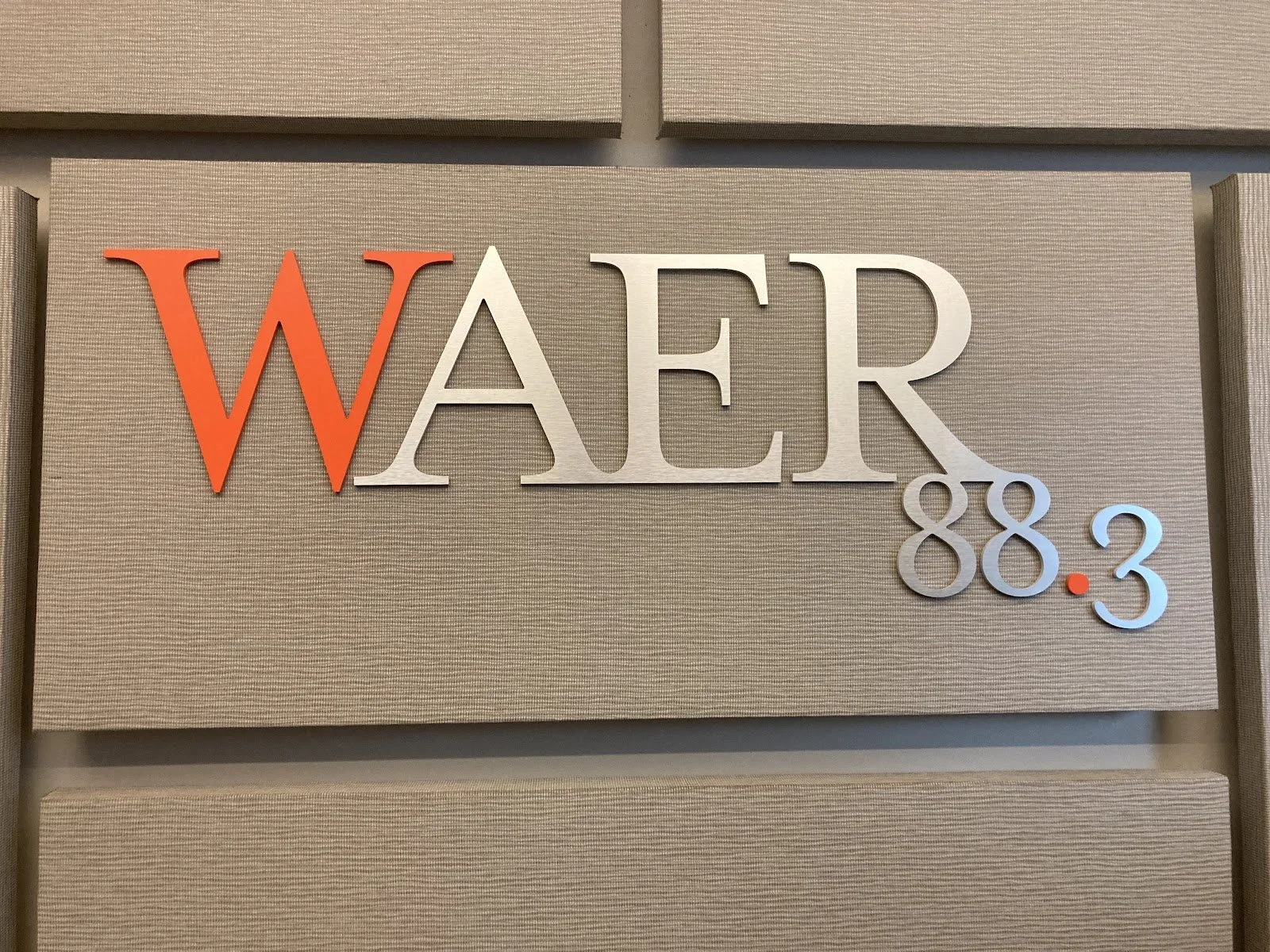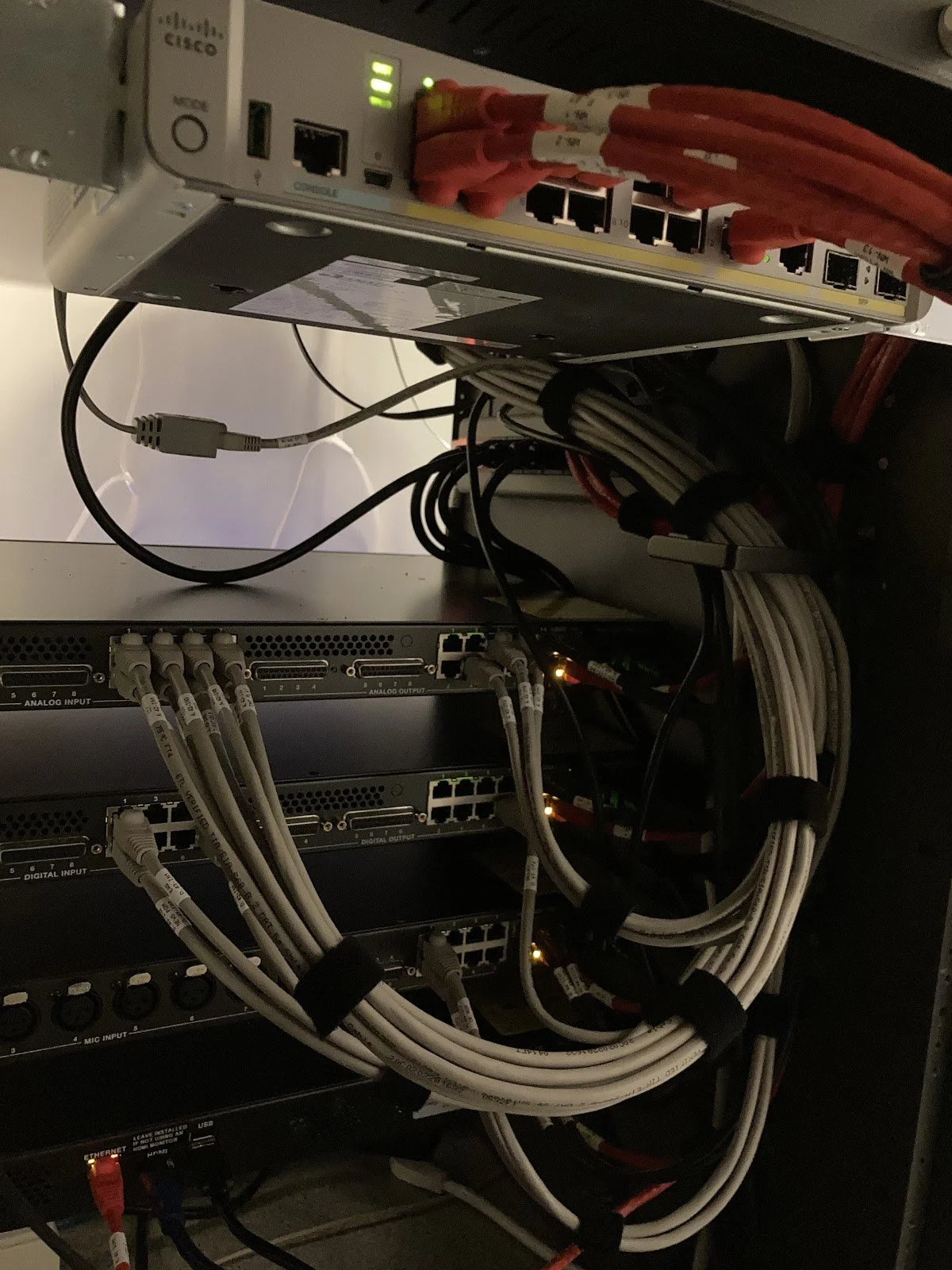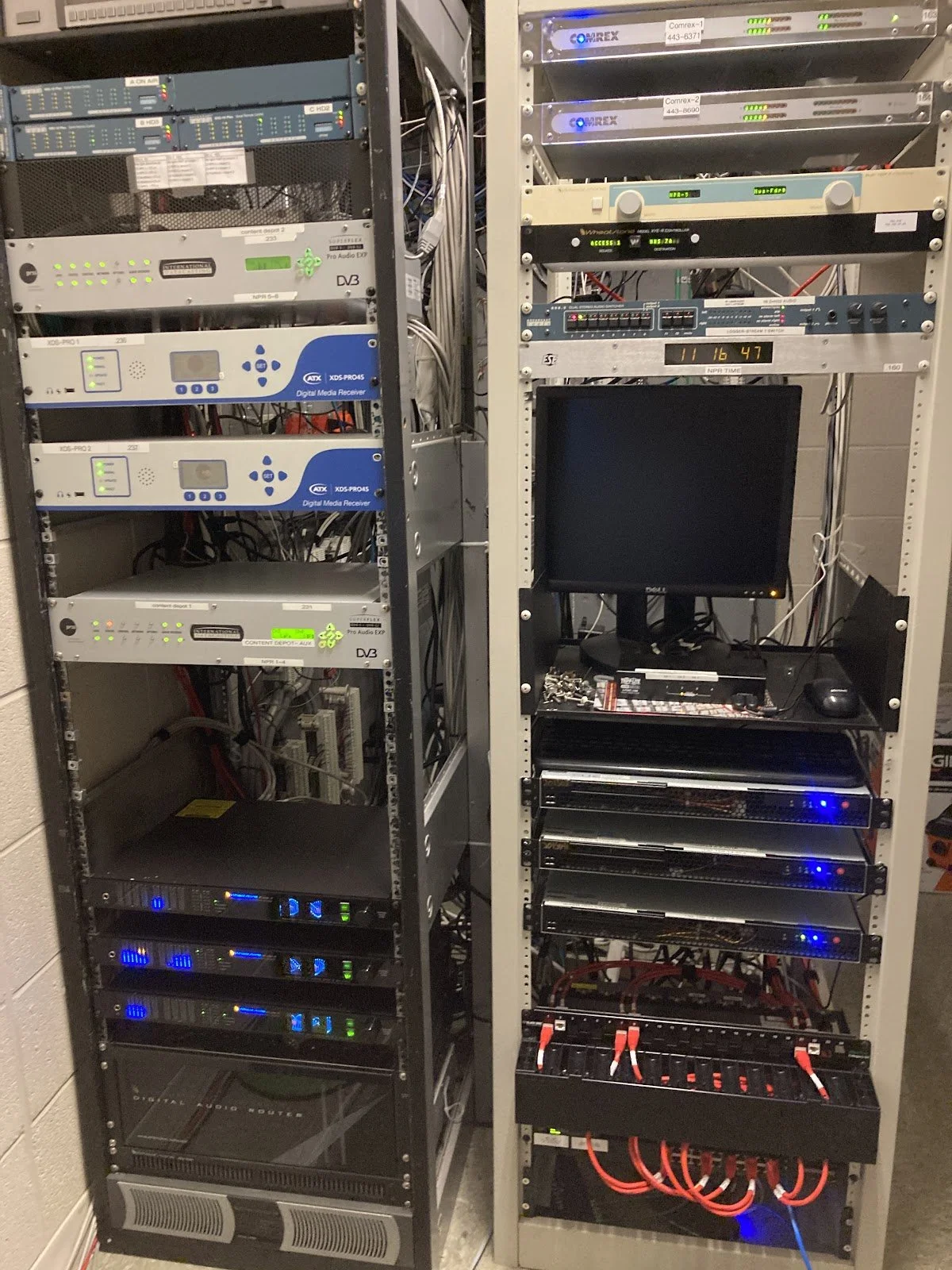The Dance of the Build in Place
Overview
There are typically two ways to accomplish a radio station renovation, each with their own complexities and problems. The first is “the move”. Instead of trying to retool your existing facility while it’s on the air, just pick up and move! Building out a new facility allows the design engineer to focus on what should be, and not any of the problems or complexities at the current facility. Many times this type of upgrade is sparked by leasing changes and the new equipment is just a happy accident. Complexities in this style of project are typically how to originate programming simultaneously from two places, duplicate studio-transmitter links (STLs) from the old and new facility, and physically relocate equipment that may be outside of the budget to replace entirely.
The second type of project is the focus of this white paper, the infamous “build in place”. This type of project requires careful coordination with programming departments, working around active studios and technical operation centers (TOCs), and working under reduced timelines to limit interruptions to available studio spaces.
Sketch. It. Out.
Inrush has handled many build in place projects over the years, but most recently we assisted Chief Engineer Dan Gurzynski through an audio over IP (AoIP) upgrade at WAER in Syracuse, NY. WAER is in a standalone building on the campus of Syracuse University. The studio space is compact and fits the needs of the station, but available space was a significant factor during the rebuild.
Before the project even began, Inrush coordinated with Dan to address project kickoff questions like:
CAT6 trunk runs – How many, and where will they land in each space?
New equipment placement throughout – How are we going to make sure that, when the project is complete, the new equipment looks like it was always meant to be there?
Studio reallocation – How do we rearrange the studio workflows for the duration of the rebuild to accommodate live programming?
How much audio IO is needed in each rebuilt studio?
What will the cable color code be?
What is the cutover plan?
The first question was relatively simple for WAER to answer. Since they’re an integrated part of the overall university campus, no planning for business network, phones, or any needs outside of audio routing was required; this was handled by campus IT and would remain in place. For broadcast operations, it was decided that just two CAT6 runs would be pulled to extend the selected AoIP network (WheatNet-IP) from the core in the TOC to each studio.
However, in many commercial facility builds this is a great time to evaluate whether all trunk runs can be consolidated into a central location in the TOC to break out to business networks, AoIP networks, and any other requirements that can utilize CAT cabling. In previous years, a multitude of types of cable (shielded audio, control, CAT3, etc) would be pulled into a given studio. Studios today can exist on only a single category of cable with patch panels located at central points. CAT6 covers the vast majority of applications and most likely will for years to come. It even supports up to 10Gbps, or approximately 2000 channels of low-latency linear audio, at a distance of up to 55 meters. At the same time, many facilities are planning even farther ahead and pulling in CAT6A which is capable of supporting the same traffic at nearly double the distance. Whatever specific CAT cable you end up choosing, the most important detail is to make sure to have a firm final count of how many individual runs you need (most air studios end up with 8-12 and production studios with 6-8) and still leave a little room for expansion. Inrush typically uses a simple spreadsheet and line drawings to mark out connections for AoIP edge switches, KVM connections (if necessary), business network edge devices, and other cross connects into each studio.
Also, make sure to verify ahead of time that your patch panels are suitably rated to handle the type of trunk cable you selected. And most importantly, always have your low voltage contractor certify the cables after they’re terminated! Certification is a process in which a special cable tester verifies that the twist integrity is maintained and that the cables’ electronic properties meet industry-standard specifications. It also helps to drastically cut down on any questions during troubleshooting about whether a faulty termination is to be blamed or not, and is required for cable manufacturers’ warranty coverage to apply.
Back on the WAER project, the next step in planning was determining how to rearrange just enough of the TOC to make space for the new gear while keeping the old equipment running. The old system consisted of a TDM Bridge Router and piles of distribution amplifiers as is typical of facilities of that vintage. During the planning phase before the project, Inrush evaluated the placement of old gear and provided elevations that would allow for the new equipment to be fit into the TOC at the start of the project. Space was made by consolidating spacers left for heat dissipation, removing depreciated equipment, and other minor shuffling. This initial repacking produced a TOC that looked intentional once all the old equipment had been removed at the end of the project.
Also up for discussion during planning was a site cable color code. Given that CAT cabling accommodates nearly all functions of a radio station, separating patch cable functions by color can be incredibly useful in later troubleshooting. Typically one color for audio, one for AoIP networking, one for general business networking, and one for “miscellaneous” is enough to cover most needs. The chosen colors are not important, so long as it is consistent, and local regulations are observed.
Finally, Chief Engineer Dan Gurzynski handled many aspects of coordinating with the programming department to accommodate their schedules. It was decided that the production room workflow would be shifted to a nearby newsroom, while Master Control operations would be shifted to production. This allowed Inrush to immediately begin rebuilding Master Control and the TOC while operations continued normally, albeit in a slightly more cramped fashion than normal. Rearranging these operations took quite a bit of front end work, but allowed the installation to start without delay.
Studio Layouts
This initial design phase of the build in place is a great time to think about the ergonomics and workflow of a space. Many times details like placement of laptops, table-top power, and keyboard placement were not considered when the original studios were built (sometimes simply because they didn’t exist!). Before the start of the project is the time to think about how that keyboard has never quite fit nicely in front of the console, or how it would be nice to stop tripping over that laptop power cable draped across the room from a wall outlet.
Other discussions should include ancillary items like visual studio indicators. The Yellowtec LITT interface is an attractive way to signal events such as a pending EAS alert, a phone ringing, active microphones, and door bells. Alternatively, planning for a machine to run an instance of Wheatstone ScreenBuilder can provide almost limitless possibilities in visual indications, additional metering, and other useful ways to enhance the usability of a studio.
Many legacy studios weren’t built out with support for the number of computer displays now featured in many studios. Floating these monitors on mounts not only looks nice, but is often essential due to lack of countertop space. Yellowtec manufactures sleek display mounts that integrate nicely with their microphone arms, but there are more cost-effective options as well like Ergotron.
Air Chain Architecture
A studio renovation project also brings to mind many questions pertaining to airchain layout and its physical placement. In many legacy facilities, having EAS units and profanity delays in the main studio was necessary to provide operator access while also simplifying wiring. With the ability to remotely control these devices with an AoIP system there is no longer an absolute need to locate that equipment in a particular studio. Relocating that equipment into a centralized location like a TOC can minimize the complexity of the airchain. If primary automation playback is also located in this same space, an airchain can be designed that no longer requires an active studio. This makes for simpler studio switching, easier maintenance, and provides increased studio availability for production and voicetracking.
Shared Site Equipment
Many broadcast facilities have shared resources like remote audio codecs. In the past, these devices might be located in a particular studio because of front panels that had to be accessed by staff or audio routing limitations. With an AoIP system like WNIP combined with new equipment that largely relies on web interfaces, relocating this equipment to a central location cuts down on the amount of cabling required in a studio, while also keeping those resources available for routing to any studio, limiting the number of codecs required.
At WAER, the WheatNet-IP (WNIP) system was leveraged with a combination of salvos and bus-minuses to fully utilize their Comrex Accesses and fixed fiber equipment to their local sports venue. This allowed each codec to be routed quickly and efficiently to any of the new WNIP studios. The LXE consoles were configured to both display whether the codec currently had control of the backfeed as well allowing an operator to quickly take a backfeed in preparation for an event. Similar functions were implemented to reroute backfeeds to the shared talk studio between the two control rooms.
The Conversion
With all details thoroughly hashed out, wirelists and elevations prepared, and programming situated, the project for WAER was ready to begin. With a plan in place, Master Control was quickly demolitioned. The Inrush team removed all old console punch blocks, pulled back unneeded cabling to the edge of the room, and tagged any cable being retained. While the same furniture was being reused, care was taken to thoroughly clean and prepare the room so that reinstall could be completed like new.
With the old console removed, a Corian console washer was installed and the new WNIP LXE was dropped into position. Where formerly the console acted as the sole interface to end devices, Wheatstone Blade-3s were placed in nearby equipment racks near the end devices, allowing for quick wiring via CAT6 cabling and StudioHub adapters. The corresponding talk studio was also stripped back to just the furniture and mounted equipment so the new blades specified in the plans could be placed, and the mics could be directly connected into the system.
With the plan firmly in place, wiring was simultaneously taking place in the TOC to prep audio and network cabling to all currently active devices. Patch cables were cut and made to length from each blade to each end device and then certified to verify operation. The wirelist Inrush prepared ahead of time acted more as a checklist rather than simply as documentation with each wire marked off by a color coded background to indicate as it changed from not wired, to wired, to certified. This also helped keep all Inrush engineers and Dan on the same page regarding progress towards the cutover.
After three days of wiring, the station had its newly renovated master control ready for air and a completed TOC complete with each wiring harness ready to plug in. A night cutover was scheduled for during satellite programming with satellite content routed directly to air for a short time to move over automation and other end devices. Logic controls of satellite content had been pre-prepped making the cutover a relatively seamless affair.





